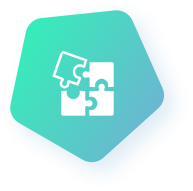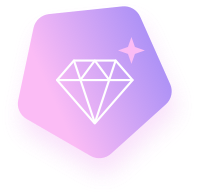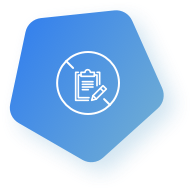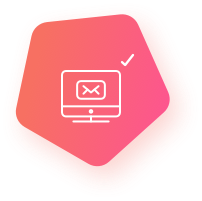Newsletters can sound like a pretty boring business, and they definitely can be. But, beyond being boring, they can be a deep way to connect with other people that feel the same way you do!
Newsletters abound. Most people I know have either wanted to, tried to, or currently do write their own newsletter—they’re kind of like podcasts.
Newsletters are a great way to build your personal brand and can be incredibly useful for the people reading them if they are curated well and provide information useful to the audience. That being said, when they’re bad they’re really bad.
Here are five lessons that I’ve learned writing the community newsletter for Wistia years ago, my own personal newsletter and the weekly newsletter for Support Driven.
 Keep It Consistent
Keep It Consistent
As anyone who works in content knows: consistency is key. In support emails, that means having a tone and style guide so the whole support team writes consistently; when writing a blog, it means having templates that you use so that all of the content looks similarly. In newsletters: it means having either a consistent segment or a consistent tone.
Consistency is incredibly important because it lets people know what to expect. People are creatures of habit, and when you push them out of their comfort zones, they’re less likely to want to keep reading what you have to say. AKA they’ll unsubscribe.
When writing a newsletter, try to have at least one segment that remains the same. This can serve as an anchor for people when they are reading your message—maybe even try styling it slightly different from the rest of your letter. An easy way to do this is to have an editorial at the top of your newsletter. This can be where you share your own insights or interpretation around what you’re sharing and, because it’s either at the top or bottom, people can skip it if it doesn’t resonate with them.
I don’t know about you, but I’m super guilty of skipping all the advertisements at the ends of the podcasts I listen to. It’s kind of like that.
 Content Is Valuable
Content Is Valuable
As I said above, there are so many newsletters out there in the world. I can think of at least six people in my immediate work-friend group that write them. Because of that, whatever content you put in it, and whatever personal shares you include in your writing are super valuable. People are going to read your newsletter just as much because of the industry you’re writing about as for the fact that you are the author.
So, make sure you put a little bit of yourself into the writing and letter itself to avoid it just being a link round-up. Try to find articles that you personally found interesting—if you can’t find enough of those each time you’re writing your newsletter, you probably need to shift the cadence.
On a similar note, know your audience and what speaks to them. For example, if you are writing a newsletter for a bunch of Fantasy Football fans, they may not be as interested in your gardening puns as someone that is, say, a member of a Tulip Society would be. Keep your writing on brand and entertaining for your audience. You’re writing for them, not for yourself.
 Short and Sweet
Short and Sweet
Anyone who knows me knows I am verbose. This has had a tendency, in the past, to come out in my newsletters and, surprising no one, I lost readers. No one wants to read a novel in their inbox (or anywhere on their phone, for that matter). When people click on an email on their phone and have to scroll more than 4 thumb shuffles to get to the bottom of it to see how long it is, you’ve inevitably lost them. They mark it as unread to come back to, and later on in the day, end up archiving it accidentally, never to be seen again.
Respect your reader—don’t hold them prisoner. Keep your editorials and newsletters short and sweet and cut to the chase. You can test and see what people find most interesting in your content by using the analytics of your email marketing software. Mailchimp, for example, does a breakdown of where people have clicked, and how many times each person has clicked there.
Once you’ve analyzed where people are spending the most time, then start playing around with the length of content. They’ll likely want to read more where they are already investing their energy. Anything else is just a waste of your time and of theirs.
 Maintain a Schedule
Maintain a Schedule
Start off your schedule as one that you can maintain. You want to be able to write quality content for your newsletter each time you send it and include links to articles or information that you find valuable—not just filler.
So, when starting your newsletter, your ability and available content should dictate how frequently you send. Once you’ve gotten into a groove, though, and you know what to expect and look for, you can start to play around with timing and cadence (after informing your readers, of course!).
As you experiment with different cadences for sending, start to take a look at the analytics in your email marketing tool of choice. Do more of your customers open up your emails on the weekend, or during the weekdays? Are they night owls or are all of them reading your letter on their morning commute?
Some tools, like Mailchimp, will even do this analysis for you and send it at the time and day where you see most of your engagement. Pretty neat!
Once you’ve found what works for your audience, try to stick to it. Knowing what to expect, can be the difference between someone accidentally marking you as spam, or waiting every week for your letter to arrive in their inbox. Of course, if you accidentally miss a newsletter, as I once did, own up to it and apologize.
Just as you would with a customer in your support inbox, if you make a mistake there’s no use in trying to cover it—it will build more good will just to be honest and say you’re sorry.
 Check your email!
Check your email!
This one eluded me for a very long time but: make sure you check the email that you send the newsletter from. Don’t just check it on the day you send the letter out (though you will get an influx of autoresponders), check it every day.
The first reason is: you’ll feel incredibly guilty if someone writes to you to let you know that the things you said in your letter resonated with them, and it takes you a month or more to respond. If you write a good newsletter, you will get emails like this.
So, check your inbox so that you can get the good vibes, and also respond to them and let them know you hear what they’re saying and have an open dialogue.
Secondarily, the issue could be a support request for your product or the company that you work with. People do not always use the support email address for a company when trying to reach out—often they will just use whatever they can find. In this case, maybe that’s replying to you weekly or monthly newsletter.
Don’t leave ‘em hanging, and if you can’t respond forward it along to someone who can. It’s an incredible bummer to reach out somewhere for help, even if that place might be the wrong place to reach, and never received anything.
 Nurturing your newsletter
Nurturing your newsletter
Newsletters can sound like a pretty boring business, and they definitely can be. But, beyond being boring and an excellent method to “grow your brand”, they can be a deep way to connect with other people that feel the same way you do and care about the same things. Treat your readers, friends, family, and audience with respect, care and kindness, and they will do the same to you by recommending your newsletter and sharing your information far and wide.
Remember: it’s not always about how many people you have listening to you shout from your virtual soapbox. Sometimes it’s about the value of the dialogue that comes from it, instead.
We have compiled 25 of our favorite customer service email templates + tips that can help you write enticing subject lines and get closer to your goals of increasing your open and click-through rates.




